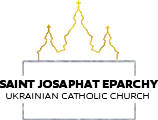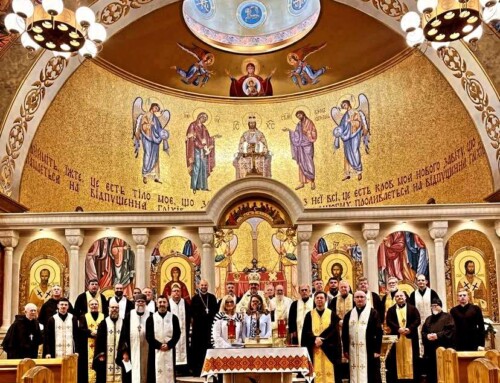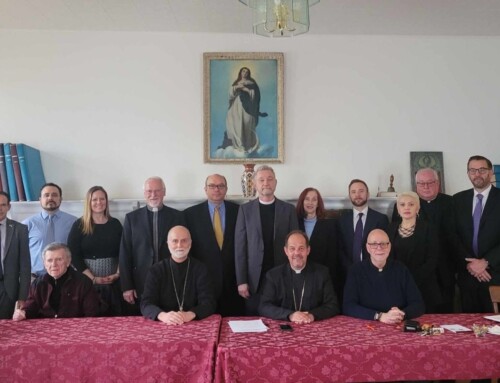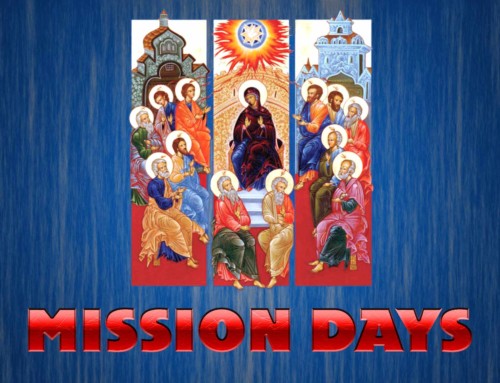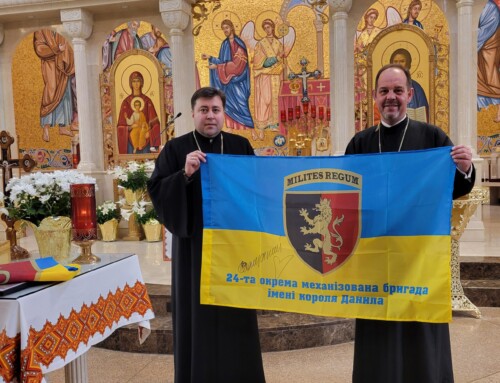The Nativity of Christ
“The Church celebrates the coming of the Son of God into the world with the feast of the Nativity of Christ. The birth of Christ is announced to the shepherds by the angel of the Lord: “To you is born this day in the city of David a Saviour, who is the Christ, the Lord”. (Lk 2:11, rsv-ce). The Fathers of the Church extolled Christmas night as a day of joy and peace:
Today the Bountiful One became poor for our sake … Today we receive a gift for which we did not ask … This present day threw open the heavenly door to our prayers … Now the Divine Being took upon himself the seal of humanity, in order for humanity to be decorated by the seal of Divinity.”
-Christ Our Pascha, Catechism of the Ukrainian Catholic Church #190
As Ukrainian Catholics, our celebration of the feast begins on Christmas Eve. “In our Church’s tradition, the Eve of the Nativity feast, also called Holy Eve (in Ukrainian, Sviat vechir), is honoured with particular solemnity. Every home becomes a Bethlehem of the family: the table symbolizes the manger; straw is placed under the tablecloth, and upon the tablecloth are placed the prosphora (Communion bread), a symbol of the Child Jesus. A lit candle is placed next to the prosphora to symbolize the star of Bethlehem. With a meatless supper, the family gathers around the table to prayerfully honour the incarnate Son of God. Christmas carols are sung by the faithful. In hospitality, homes open their doors to everyone who celebrates the Nativity of Christ. The high point of the celebration of the Nativity feast is the solemn divine service, for which all parishioners gather. The Eucharistic Supper at the Divine Liturgy crowns the family supper. ”
-Christ Our Pascha, Catechism of the Ukrainian Catholic Church #196
Ukrainian families celebrate Christmas with traditional customs that are filled with feasting and much symbolism.
Symbolizing the twelve apostles, the holy supper consists of twelve meatless dishes. The most important dish is kutia. This is made by boiling whole wheat until it is tender and mixing it with honey, poppy seeds, and nuts. The wheat symbolizes the relationship of the people to their land and serves as a reminder of Holy Communion.
Kolach, a braided loaf of sweet bread is made in the form of a circle to symbolize eternity where there is no beginning and no end. Other dishes served may include borsch, pyrohy, holupchi, one or more fish dishes, vegetables and fruit.
When the meal is finished, gifts may be exchanged, carols are sung and the family departs for the Christmas Divine Liturgy
Christmas carols are sung throughout the Christmas Season, which extends until February 2, with the traditional Christmas greeting “Christ is Born!”
Within the Ukrainian community, customs may vary. As we gather as a family, we may focus our attention on how our family celebrates the Nativity of Our Lord.
- Are there special customs that we observe within our immediate family?
- Do we have a special place of honor in our home where we display an icon of our Lord’s birth?
- Do we share the story of Jesus’ birth with our children?
- As a family, do we place importance on celebrating this feast by attending the Divine Liturgy together?
- Are there any other customs that we may create to pass down to the members of our family to celebrate Christmas for years to come?
We wish all of our families a most blessed and holy Christmas!
